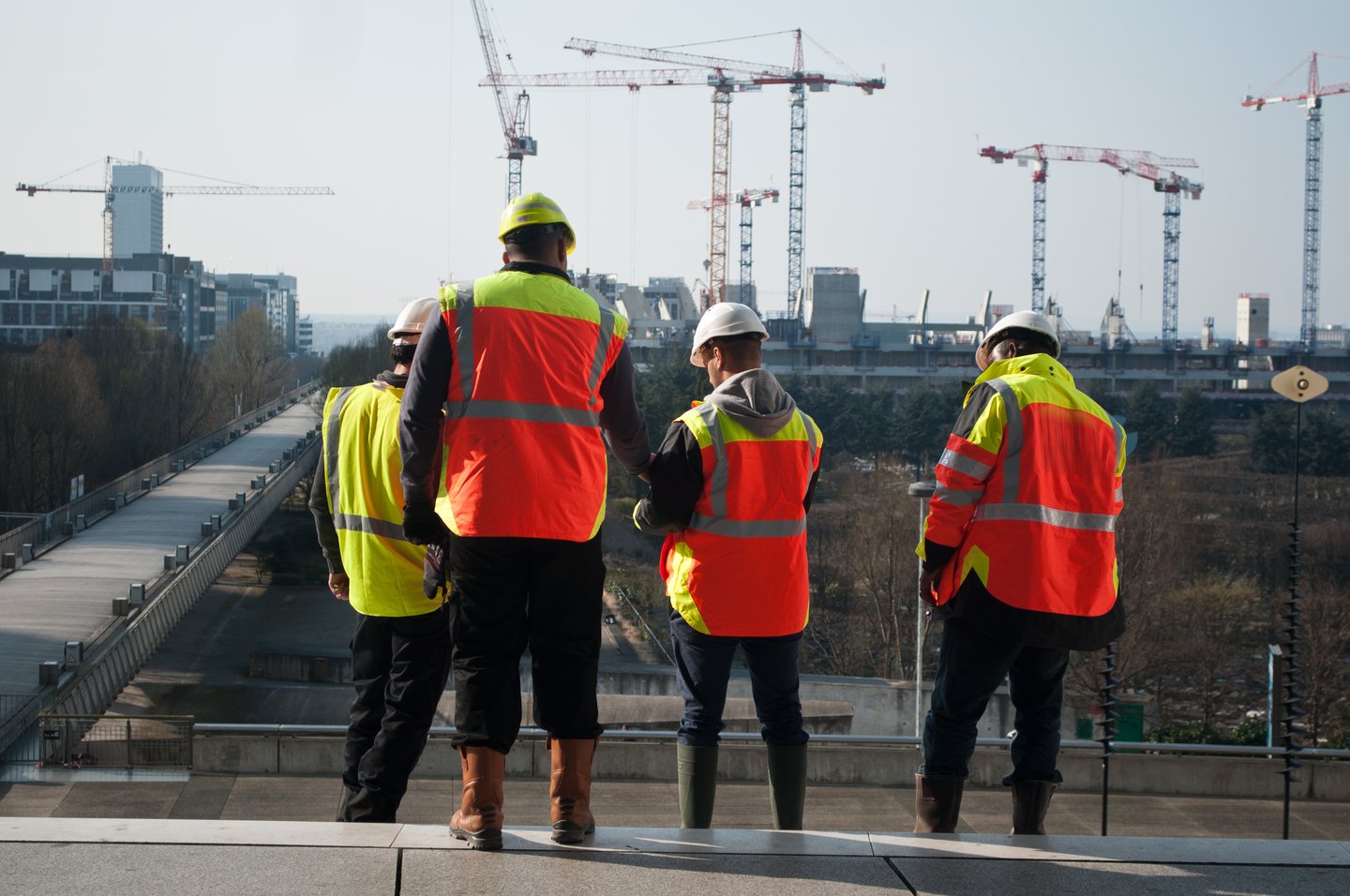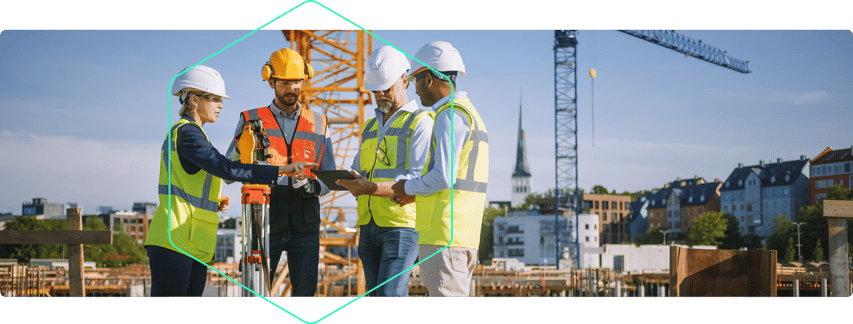Published on
Ensuring staff safety on construction sites

According to IRIS-ST, an accident occurs every two minutes on every working day on a construction site. Construction is indeed a sector in which accidents, which can be very serious, occur. However, it is your duty as an employer to ensure the safety of employees in the workplace. The good news is that indicators are becoming more positive. There are currently 56.8 accidents per 1,000 employees in the construction sector, compared to 60 in 2016.
Similarly, according to French Medical Insurance statistics, the total number of accidents at work in the construction sector fell by 0.3% in 2019. To achieve such results, it is necessary to introduce appropriate preventive measures, but also relevant controls and frequent audits. It is also important to take into account new rules in force for securing construction sites. Explanations.
The importance of securing construction sites
 On a construction site where project managers, team leaders, masons and machines rub shoulders in a noisy atmosphere for hours on end, the risks of occupational accidents are high and can have serious consequences. According to Eurostat Statistics Explained, the construction sector has the highest number of accidents (fatal and non-fatal) and near misses.
On a construction site where project managers, team leaders, masons and machines rub shoulders in a noisy atmosphere for hours on end, the risks of occupational accidents are high and can have serious consequences. According to Eurostat Statistics Explained, the construction sector has the highest number of accidents (fatal and non-fatal) and near misses.
Applying certain safety rules and taking appropriate measures to prevent possible accidents is the very least that must be done to ensure the safety of everyone involved. Companies are obliged to do what is necessary to promote the safety of operational teams.
In recent years, the prevention of risks in construction has evolved considerably. Thus, the OPPBTP (Organisme Professionnel de Prévention du Bâtiment et des Travaux Publics - Professional Organisation for Safety in Building and Public Works) is dedicated to raising awareness on safety rules. The French government has itself instituted rigorous prevention procedures.
Finally, contractors no longer hesitate to switch to the use of digital tools as effective means to improve the safety and security of employees on construction sites. The aim is to minimise physical risks that can range from minor injury to permanent physical disability or even death of employees. In the long term, these very tragic events can seriously damage the company's image and reputation.
How to ensure safety of teams on construction sites?
The law requires contractors to ensure the safety of their employees' place of work. They are also responsible for the health and safety of employees. In the construction sector, this is reflected in the implementation of a risk prevention policy and frequent checks. Here is how to ensure the safety of teams on construction sites so that they can work in a favourable environment.
Identify risks
The first thing to do to secure the teams on sites is to identify the risks to which they are exposed. Typically, the most frequent accidents occur due to:
- physical exertion (for example, laying, lifting, pushing materials);
- a fall from a height (from defective scaffolding, for example); ;
- the use of hand tools.
Once you have identified the main causes of site accidents, you can take the necessary measures to prevent them. Providing better protection against such accidents could, in fact, allow you to avoid injuries.
Train staff
It is the employer's responsibility to ensure that every worker is fully aware of the hazards to which they are exposed. The employer must also provide staff with all the useful resources to deal with such hazards.
Therefore, you must ensure that your employees are fully trained to carry out their missions without endangering their safety or that of their colleagues. If any of your employees has not received specific training or is unaware of the risks involved, they should be denied access to the site.
Provide Personal Protective Equipment (PPE)
Likewise, you must provide your employees with suitable equipment, which allows them to work safely. Your workers must therefore have the necessary PPE (Personal Protective Equipment) such as:
- a hard hat that meets the latest standards and is adapted to the context of the work (shock-proof, commonly used, electrically insulating, etc.);
- safety footwear, which protects against shocks, chemicals, aggressive agents, etc.;
- hearing protection above a certain noise level;
- eye protection goggles that meet the latest applicable standards;
- gloves, to protect their hands from cuts, fire, chemicals, etc.;
- work clothes adapted to the hazards of the site.
Carry out quality safety checks
In order to facilitate the safety of teams on construction sites, it is essential to carry out frequent safety checks. While controls had been in place for many years, they were neither systematic nor mandatory.
Today, with the arrival of new institutional players and new trades (QHSE - quality, health, safety and environment - manager, HSE - health, safety and environment - managers, project owner, etc.), the entire sector has become aware of the need for visibility on safety issues.
However, it is also important to be methodical and to set up appropriate control processes. While paper sheets have long been the norm, they do not allow for extensive checks.
Therefore, it is essential to have effective digital tools in order to:
- prepare the upstream checks and pool them with other sites;
- carry out localised and time-stamped checks;
- communicate in real time on potential incidents;
- be able to track the traceability of controls, etc.
Digital technology to make teams safer in the workplace
-MOBILE%20(FR).jpg?width=563&name=PRODUCTS-FORMS%20(1)-MOBILE%20(FR).jpg)
Today, adopting digital tools, platforms and appropriate software is an excellent way to carry out meticulous checks in order to ensure the safety of teams on construction sites. Digital technology, in fact, offers reliability to security checks. As a result, the checks carried out are more precise and more effective, which makes it possible to improve the safety of employees at the site.
Industrialising safety checks on all construction sites by means of digital technology is an extremely effective means of preventing and reducing accidents at work. Companies can therefore set up safety indicators and then report on these results, either for preventive purposes or to further improve processes.
You have a digitisation project, let's talk about it!

